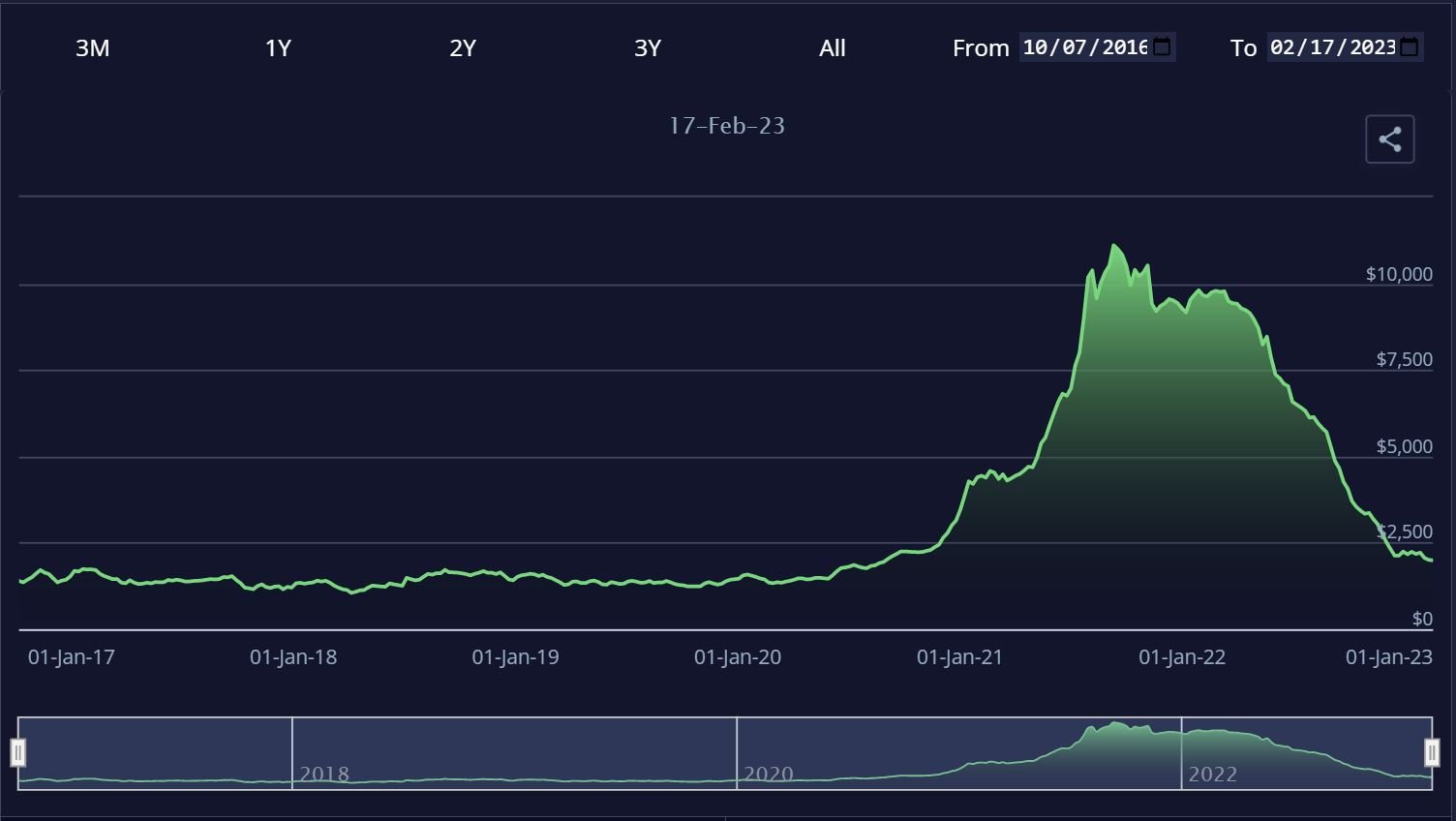Macroeconomic Considerations
Before publishing board games I spent my career in finance – investing in and analyzing companies in the specialty finance and housing finance spaces.
While board games publishing is a long way from Wall Street, and I’m admittedly out of touch with the markets, I still enjoy thinking through some of the driving macroeconomic forces that impact indie publishing.
None of these are as important as blocking and tackling and execution for a small publisher like us – but I find them interesting none the less.
Freight
Freight costs have substantially normalized. According to Freightos’ Global Container Index rates are down about 80% from their peaks, and only about 30% above pre-pandemic norms.
It is possible that we could see some additional moderation (especially through a recession). That said, rates are already back to a manageable level for indie publishers.
Inflation
It’s a little tricky to tease out inflationary pressure (or lack there of) on the board game market.
The most comprehensive dataset for the toys and games space is the Consumer Price Index (CPI): Toys, which has been deflationary for decades.
Compare this to the overall CPI.
CPI is a measurement of the change in price over time for a set basket of goods. Using food as an example, if food products on average increased 5% in a period then the CPI: Food would be up 5%. This would be the case even though individual food items were up or down separately (i.e. steak might be 2% less expensive, and eggs 8% more expensive…).
There are a number of issues with using CPI: Toys as a proxy for board games pricing. First is that the basket of goods is much broader than board games.
CPI also only measures the changes in price of the specific goods in the basket. This means it can fail to accurately capture the impact of new products, or technological advancement.
There are a number of board game secondary markets with public pricing, such as Board Game Geek, through which we can check pricing for secondary sales of specific games.
This approach is cumbersome, and only captures pricing on individual titles, oftentimes in the face of increasing supply as new print runs are released.
BGG Marketplace Catan Sales
If we wanted a good data set to capture inflation/deflation within the board games segment, I think we’d need a survey of both new releases which are benchmarked based on their component skew, as well as a time series of pricing on existing titles.
I suspect that retail stores, GAMA, or distributors would be able to compile some good data – but the task is outside of the scope of this article, or what I am going to compile.
Without a solid dataset we’re left with casual observation. As a long time board game consumer, and a newer publisher, these are my impressions of the current state of board games pricing (I’d love to see some data supporting or refuting my impressions).
Deflationary: Discounted online retailers, market expansion driving economies of scale, and distribution into big box retailers (Target, Walmart), has put deflationary pressure on broadly popular hobby board games. Some titles have Target Specific editions at discounted rates, others benefit broadly from substantial economies of scale driving down pricing.
These trends have been longer term with discounted online retailers chipping into the brick and mortar market in the early 2000s, and with hobby games expanding into big box retailers in the 2010s (the first Target Exclusive hobby board game I know of was from 2012).
While indie publishers and smaller print run games don’t benefit from the same economies of scale, lower cost alternative hobby games do put pressure on what indie publishers can charge.
That said, I would suspect that while individual titles may see some deflationary pressure as they gain popularity and can expand their production runs, the broad market effect of broader distribution channels have run their course.
Inflationary: I believe the new release board game space has seen some inflation through and post pandemic. There are a couple of potential triggers including freight disruptions driving up costs, and broader inflationary pressure.
I don’t have a good dataset to support my observation, just my impressions as a long term consumer. Newer mid-weight games seem to be coming out at ~$55 MSRP whereas they were $45 six or seven years ago.
These inflationary pressures are modest relative to other products, but I do believe that publishers have some pricing flexibility on new releases.
Countercyclicality
There is some indication that we may be heading towards a recession.
An inverted yield curve as of 02-17, a historically strong predictor of recessionary risk
Historically toys and games have been procyclical – that is trended with overall consumer spending.
That said, every recession is different, and notably board games have performed well in recent downturns (2008 & 2020).
The reason for board game countercyclicality is that board games are an inexpensive source of entertainment (relative to the amount of time spent playing). This drives a shift in consumer spending from more expensive to time entertainment sources towards board games.
I suspect that board game countercyclicality isn’t evenly spread across titles, and in aggregate would expect Kickstarter games and especially high dollar price Kickstarter tiles (big box miniatures, and exclusives) to be procyclical (luxury goods are highly cyclical).
All of this said, while thinking through macroeconomic trends and industry impacts is interesting, the relationships aren’t particularly useful for indie board games publishers. Blocking and tackling, a strong community, and good execution will be much more impactful to our fate, than a couple percent change in unemployment or inflation.
What hobbies did you pick up through the 2008 or 2020 economic downturns?








